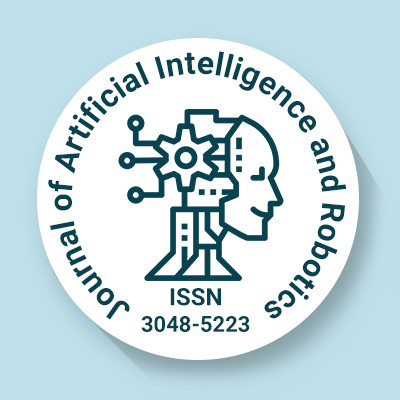
Journal of Artificial Intelligence and Robotics
OPEN ACCESS
ISSN: 3048-5223

OPEN ACCESS
ISSN: 3048-5223
Human-Robot Interaction (HRI) is a field where humans and robots collaborate to attain common goals. Several new applications demand robots to collaborate with humans as effective members of the human-robot team. Some of these include robots for homes, offices, space exploration, hospitals, and manufacturing. HRI is a multidisciplinary field that includes classical robotics, human-computer interaction, artificial intelligence, process design, layout planning, ergonomics, psychology, and cognitive sciences. Industrial uses of human-robot interaction include collaborative robots which physically engage with humans within a common working space to finish tasks like cooperative manipulation.
For successful human-robot teamwork, it is important that the robot can understand and interpret multiple communication mechanisms like the mechanism for human-human communication. The robot should also reciprocate its own goals to create and sustain a set of mutual beliefs and to implement an accurate plan.
Human-robot interaction in healthcare is revolutionizing patient treatment and medical care. Robotic surgical platforms, such as the da Vinci Surgical System. Increase accuracy and minimally invasive techniques and enable surgeons to undertake complex procedures with better precision. Assistive robots like exoskeletons and robotics prosthetics, assist mobility impaired individuals to regain autonomy. In addition, social robots like PARO and Pepper offer emotional care to older adults, engage with children in a learning environment, and help people with autism acquire communication skills.
Robots are increasingly being deployed in restaurants, hotels, and retail outlets to assist with customer service, food delivery, and inventory tracking. Humanoid robots powered by AI, such as Softbank’s Pepper, interact with customers through natural language processing, face recognition, and hand gesture-based interaction, delivering personalized and interactive experiences.
Autonomous robots are also used in search and rescue missions. Fitted with AI-based vision systems, ground robots and drones travel through dangerous terrain, find survivors, and transport relief supplies in disaster zones. Autonomous robots lower the risk to human responders while enhancing the pace and efficiency of rescue efforts.
In the future, advanced technologies like BCIs and neuromorphic computing can reshape HRI. BCIs may enable humans to control robots with brain signals, opening up new avenues in assistive tech and remote operations. Neuromorphic computing, which replicates the neural architecture of the human brain, can bring more adaptive and human-like robots with real-time learning capabilities.
As robots become part of our way of life, designing a positive human-robot relationship will determine the course of work, healthcare, and everyday life. With safety, responsible AI development, and simple communication at the forefront, we can make sure that robots augment human abilities, enhance the quality of life, and build a future where humans and machines cooperate in harmony.